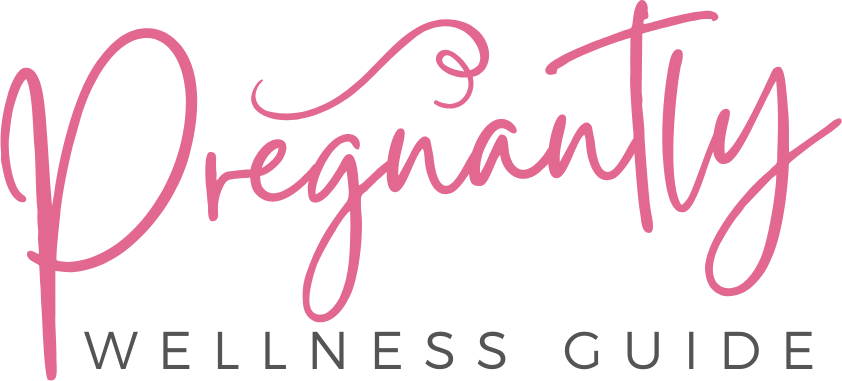
Osteoporosis, a debilitating condition characterized by weakened bones and increased fracture risk, poses a significant health concern for women worldwide.
This article explores the factors associated with osteoporosis in women, including age, genetics, and hormonal changes.
It also discusses the role of calcium and vitamin D in promoting bone health, the benefits of exercise and physical activity in preventing osteoporosis, as well as the potential impact of hormone therapy.
Additionally, lifestyle modifications that contribute to maintaining strong bones among women are examined.
By understanding these key aspects, individuals can make informed decisions regarding osteoporosis prevention strategies.
Key Takeaways
– Early detection through a dual-energy X-ray absorptiometry (DXA) scan is important for identifying individuals at higher risk for osteoporosis and implementing targeted screening programs.
– Adequate intake of calcium and vitamin D through diet and supplementation is crucial for maintaining optimal bone density and preventing osteoporosis.
– Regular weight-bearing exercises and resistance training can help improve bone mineral density and reduce the risk of fractures.
– Hormone replacement therapy (HRT) may be beneficial for preventing bone loss, especially during early menopause, but individual risks and benefits should be carefully evaluated before initiating treatment.
Risk Factors for Osteoporosis in Women
One of the key areas of research in women’s bone health is identifying and understanding the risk factors associated with osteoporosis development. Early detection of osteoporosis plays a crucial role in preventing its progression and reducing the risk of fractures. Genetic factors also contribute to the susceptibility of developing osteoporosis in women.
Early detection involves assessing bone density through a dual-energy X-ray absorptiometry (DXA) scan, which measures bone mineral density (BMD). This non-invasive test helps identify individuals with low BMD who are at higher risk for fractures. Additionally, other risk factors such as age, family history, low body weight, smoking, excessive alcohol consumption, and certain medical conditions can be assessed to further evaluate an individual’s likelihood of developing osteoporosis.
Genetic factors have been found to play a significant role in determining an individual’s susceptibility to osteoporosis. Studies have identified specific genes that are associated with decreased BMD and increased fracture risk. These genetic variants affect various aspects related to bone metabolism and structure.
Understanding these risk factors for osteoporosis in women is essential for early detection and intervention strategies aimed at preventing fractures and optimizing overall bone health. Identifying individuals at higher risk allows for targeted screening programs and implementation of preventive measures to reduce the burden of this debilitating condition.
Importance of Calcium and Vitamin D for Bone Health
Calcium and vitamin D play a crucial role in maintaining optimal bone density. Adequate intake of these nutrients is essential for preventing conditions such as osteoporosis.
Here are some key points regarding dietary sources of calcium and vitamin D, as well as supplements for bone health:
Dietary sources of calcium: Dairy products like milk, cheese, and yogurt are rich in calcium. Other sources include leafy green vegetables, tofu, almonds, and fortified foods such as cereals and orange juice.
Dietary sources of vitamin D: The primary source of vitamin D is sunlight exposure. However, it can also be obtained from fatty fish like salmon and mackerel, egg yolks, fortified dairy products, and certain mushrooms.
Supplements for bone health: In cases where dietary intake is insufficient or individuals have limited sun exposure, supplements may be recommended to ensure adequate calcium and vitamin D levels.
Ensuring adequate intake of calcium and vitamin D through diet or supplementation can contribute to the maintenance of healthy bones throughout life.
Exercise and Physical Activity for Preventing Osteoporosis
Exercise and physical activity have been shown to be effective strategies in maintaining bone density and reducing the risk of fractures. Weight bearing exercises, such as walking, jogging, and dancing, are especially beneficial for promoting bone health. These activities require the muscles to work against gravity, which stimulates the bones to become stronger.
Resistance training is another important component of an exercise routine for osteoporosis prevention. This type of exercise involves using weights or resistance bands to build muscle strength and improve bone density. Studies have consistently demonstrated that individuals who engage in regular weight bearing exercises and resistance training have higher bone mineral density compared to those who lead sedentary lifestyles.
These activities also improve balance and coordination, reducing the risk of falls and subsequent fractures in older adults.
Hormone Therapy and Its Role in Bone Health
Hormone therapy has been extensively studied for its potential benefits in maintaining bone density and reducing the risk of fractures. Hormone replacement therapy (HRT) can help prevent bone loss, especially during early menopause. Estrogen, a key component of HRT, plays a crucial role in maintaining bone health. HRT can improve bone mineral density and reduce the risk of fractures. The duration and timing of hormone therapy are important factors to consider when assessing its effectiveness.
Research suggests that short-term estrogen therapy within 10 years after menopause may have beneficial effects on bone health. However, long-term use of hormone replacement therapy may increase the risk of certain adverse events such as breast cancer and cardiovascular disease. Therefore, it is essential to carefully evaluate individual risks and benefits before initiating hormone therapy for menopause management. Additionally, non-hormonal alternatives such as bisphosphonates or selective estrogen receptor modulators should be considered as well.
Further research is needed to optimize hormone therapy regimens for long-term bone health benefits while minimizing potential risks.
Lifestyle Changes for Maintaining Strong Bones in Women
Dietary modifications and weight-bearing activities have been found to have a significant impact on maintaining optimal skeletal integrity in individuals at risk of bone loss. For women, specific dietary recommendations can help promote strong bones and prevent conditions such as osteoporosis.
Adequate intake of calcium and vitamin D is crucial for bone health, as these nutrients play a key role in bone mineralization. It is recommended that women consume 1000-1300 mg of calcium per day, depending on age and menopausal status. Good sources of calcium include dairy products, leafy green vegetables, and fortified foods.
Vitamin D helps with the absorption of calcium and can be obtained through sun exposure or supplementation. Additionally, regular physical activity that involves weight-bearing exercises, such as walking or strength training, stimulates bone remodeling and helps maintain bone density.
While genetics do play a role in determining an individual’s susceptibility to osteoporosis, lifestyle factors such as diet and exercise are also important in maintaining strong bones in women at risk for bone loss.
Frequently Asked Questions (FAQs)
Can Men Develop Osteoporosis Too?
Osteoporosis can affect men as well. Risk factors include age, low body weight, smoking, excessive alcohol consumption, and certain medical conditions. Genetic factors also play a role. Preventive strategies involve adequate calcium and vitamin D intake, regular exercise, and lifestyle modifications.
Are There Any Natural Ways to Increase Calcium and Vitamin D Intake?
Various natural sources can be used to increase calcium and vitamin D intake, such as dairy products, leafy greens, and fatty fish. Following a diet rich in these nutrients is essential for maintaining optimal bone health.
How Often Should I Exercise to Prevent Osteoporosis?
Regular exercise plays a crucial role in osteoporosis prevention. Specifically, weight-bearing exercises have been shown to provide significant benefits by increasing bone density and strength. It is recommended to engage in these exercises regularly for optimal results.
Are There Any Alternative Treatments to Hormone Therapy for Maintaining Bone Health?
Several natural remedies and dietary changes can be explored as alternative treatments for maintaining bone health. These options may prove beneficial in lieu of hormone therapy, providing individuals with more freedom in their approach to osteoporosis prevention.
Can Stress and Anxiety Affect Bone Health in Women?
The effects of chronic stress on bone density in women and the potential impact of anxiety on osteoporosis are topics that have been studied. Psychological interventions may offer some benefit in reducing anxiety in women with osteoporosis.
Conclusion
In conclusion, the prevention of osteoporosis in women is crucial for maintaining strong bone health. Risk factors such as age, family history, and lifestyle choices can increase the likelihood of developing this condition.
Adequate intake of calcium and vitamin D through diet or supplementation is essential for optimal bone health. Engaging in regular exercise and physical activity can also help prevent osteoporosis by strengthening bones and improving balance.
Hormone therapy may be considered for postmenopausal women at high risk. Making lifestyle changes such as quitting smoking and limiting alcohol consumption can further support bone health.
An interesting statistic to note is that approximately one in two women over 50 years old will experience an osteoporotic fracture in their lifetime (International Osteoporosis Foundation).







